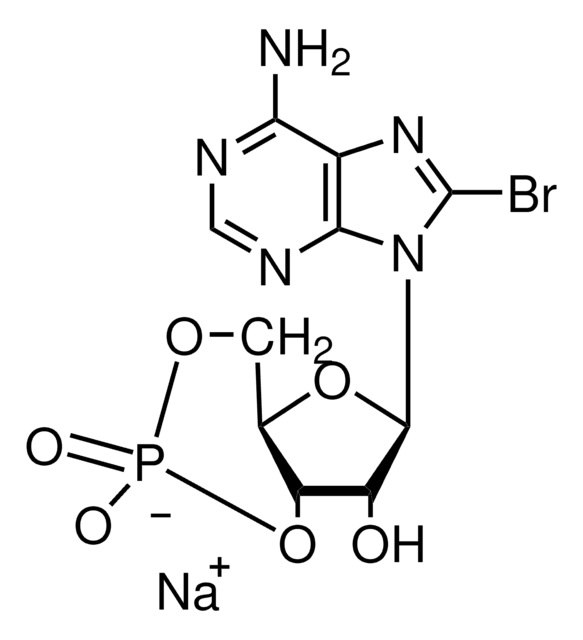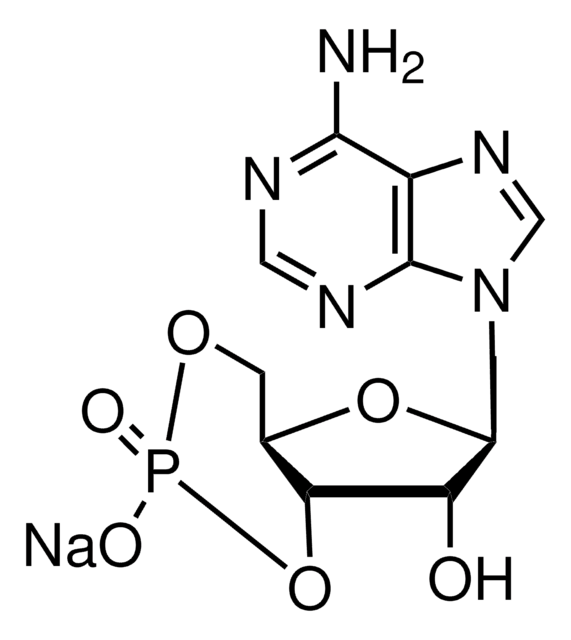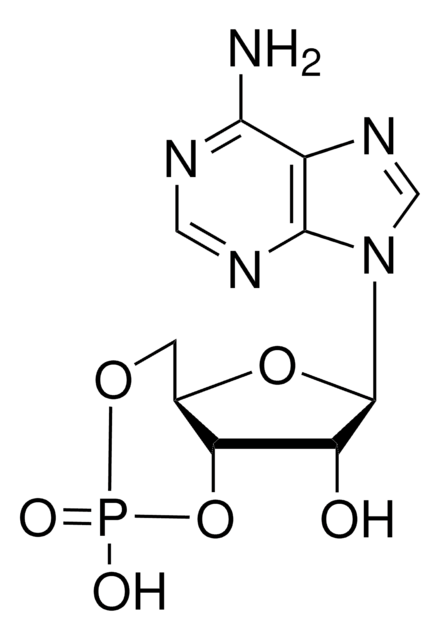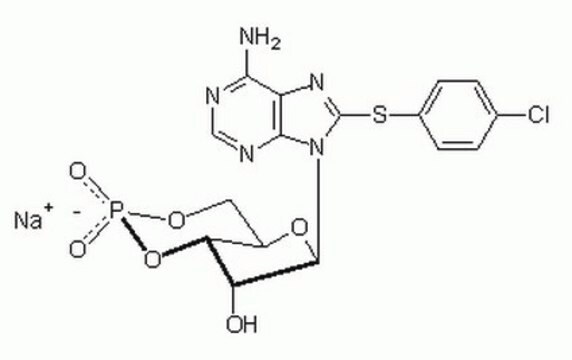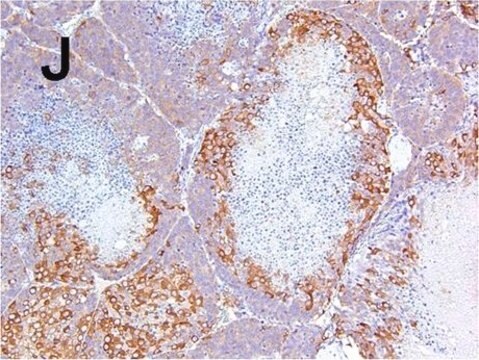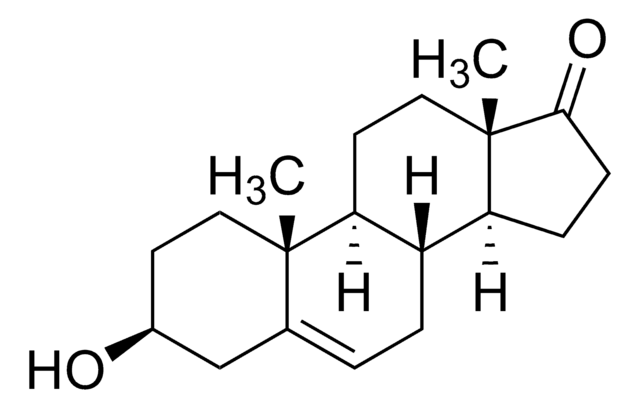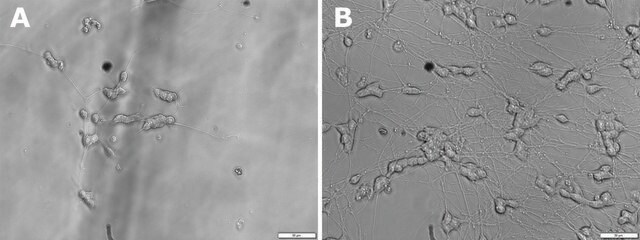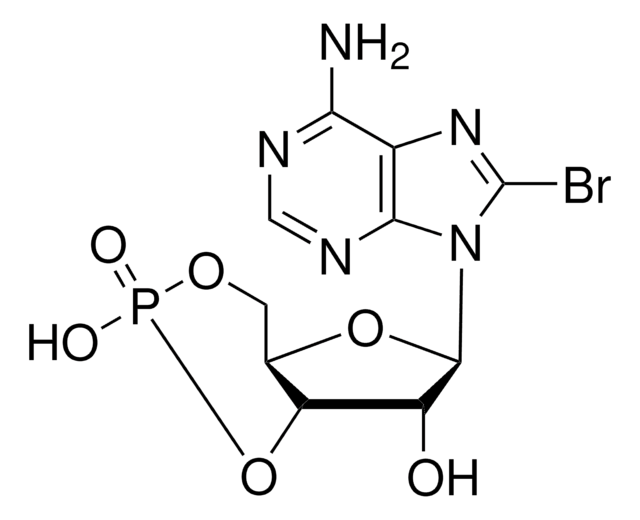28745-M
Adenosine 3′,5′-cyclic Monophosphate, N6,O2′-Dibutyryl-, sodium salt
≥95% (HPLC), lyophilized solid, PKA activator, Calbiochem®
Synonyme(s) :
Adenosine 3′,5′-cyclic Monophosphate, N⁶,O2′-Dibutyryl-, Sodium Salt, Dibutyryl-cAMP, Na
About This Item
Produits recommandés
product name
Adenosine 3′,5′-cyclic Monophosphate, N⁶,O2′-Dibutyryl-, Sodium Salt, This Dibutyryl-cAMP, CAS 16980-89-5, is a cell-permeable cAMP analog that preferentially activates PKA.
Niveau de qualité
Pureté
≥95% (HPLC)
Forme
lyophilized solid
Fabricant/nom de marque
Calbiochem®
Conditions de stockage
OK to freeze
desiccated (hygroscopic)
Couleur
white
Solubilité
water: 1 mg/mL
Température de stockage
−20°C
InChI
1S/C18H24N5O8P.Na/c1-3-5-11(24)22-16-13-17(20-8-19-16)23(9-21-13)18-15(30-12(25)6-4-2)14-10(29-18)7-28-32(26,27)31-14;/h8-10,14-15,18H,3-7H2,1-2H3,(H,26,27)(H,19,20,22,24);/q;+1/p-1/t10-,14-,15-,18-;/m1./s1
Clé InChI
KRBZRVBLIUDQNG-JBVYASIDSA-M
Description générale
Actions biochimiques/physiologiques
PKA
Avertissement
Reconstitution
Autres remarques
Tsai, C.H., et al. 1995. J. Cell. Physiol.164, 108.
Leszczynski, D., et al. 1994. Am. J. Pathol.145, 1265.
Miller, C., et al. 1994. J. Neurosci. Res.38, 56.
Hinko, A., and Soloff, M.S. 1993. Endocrinology 132, 126.
Ikeda, K., et al. 1993. J. Biol. Chem. 268, 1174.
Park, E.A., et al. 1993. J. Biol. Chem.268, 613.
Hei, Y-J., et al. 1991. Mol. Pharmacol. 39, 233.
Posternak, T., and Weimann, G. 1974. Methods Enzymol. 38, 399.
Informations légales
Code de la classe de stockage
11 - Combustible Solids
Classe de danger pour l'eau (WGK)
WGK 2
Point d'éclair (°F)
Not applicable
Point d'éclair (°C)
Not applicable
Certificats d'analyse (COA)
Recherchez un Certificats d'analyse (COA) en saisissant le numéro de lot du produit. Les numéros de lot figurent sur l'étiquette du produit après les mots "Lot" ou "Batch".
Déjà en possession de ce produit ?
Retrouvez la documentation relative aux produits que vous avez récemment achetés dans la Bibliothèque de documents.
Les clients ont également consulté
Notre équipe de scientifiques dispose d'une expérience dans tous les secteurs de la recherche, notamment en sciences de la vie, science des matériaux, synthèse chimique, chromatographie, analyse et dans de nombreux autres domaines..
Contacter notre Service technique



